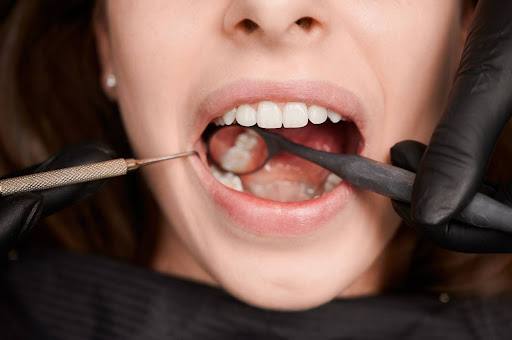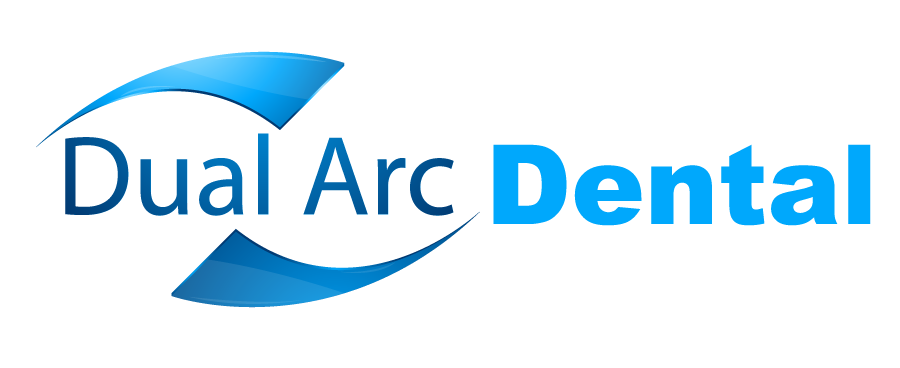
Team Dualarcdental June 08, 2025
Tooth extraction is a common dental procedure that many people experience at some point. It involves removing a tooth from its socket in the bone. While it might sound simple, understanding the full process can help ease any anxiety and prepare you for what to expect.
If you ever need a tooth extraction, knowing what happens before, during, and after the procedure can make a big difference in your comfort and recovery. A trusted dental extraction doctor or oral surgery expert can guide you through every step to ensure your safety and wellbeing.
What Happens Before Tooth Extraction?
Preparation is important before the tooth removal. Here’s what typically happens:
- Initial Exam and X-rays: The dentist or oral surgery expert will examine your mouth and take X-rays to see the tooth’s position and the surrounding bone. This helps them plan the best way to remove the tooth safely.
- Discussing Your Medical History: Your dentist will ask about your medical conditions, medications, and allergies. This information helps avoid any complications during the extraction.
- Explaining the Procedure: The dental extraction doctor will explain the steps involved, what type of anesthesia will be used, and how to prepare for the day of the extraction.
- Anesthesia Options: Local anesthesia is commonly used to numb the area, so you won’t feel pain during the procedure. Sometimes, sedation or general anesthesia may be suggested for complex cases or anxious patients.
- Before the Procedure: You may be asked to avoid eating or drinking for a few hours before the extraction if sedation is planned.
What Happens During Tooth Extraction?
The actual tooth removal can be straightforward or more complex depending on the tooth and its condition. Here’s a general idea of what to expect:
- Numbing the Area: The dentist or dental extraction doctor will first numb the area around the tooth with local anesthesia. You might feel a small pinch during the injection, but after that, the area should be numb.
- Loosening the Tooth: The dentist uses special tools to gently loosen the tooth from its socket. For teeth that have broken or are impacted, the process may require cutting the tooth into smaller pieces for easier removal.
- Extracting the Tooth: Once loose, the tooth is carefully pulled out using forceps.
- Controlling Bleeding: After the tooth is removed, the dentist will place a gauze pad over the extraction site to control bleeding. You will be asked to bite down gently on the gauze for about 30 minutes.
- Stitches (if needed): Sometimes stitches are needed to close the gum edges, especially after surgical extractions.
What Happens After Tooth Extraction?
Post-extraction care is essential for healing and preventing complications. Here’s what to keep in mind:
- Managing Pain and Swelling: It’s normal to feel some pain and swelling after the extraction. Your dentist may recommend over-the-counter painkillers or prescribe stronger medication if needed. Using an ice pack on the cheek near the extraction site can reduce swelling.
- Avoiding Dislodging the Blood Clot: A blood clot forms in the empty socket and helps the healing process. Avoid:
- Spitting forcefully
- Using straws
- Smoking
- Rinsing your mouth vigorously for at least 24 hours after the extraction.
- Eating and Drinking: Stick to soft foods and avoid hot or spicy meals for the first few days. Drink plenty of fluids, but avoid alcohol and carbonated drinks.
- Keeping the Area Clean: After 24 hours, gently rinse your mouth with salt water to keep the extraction site clean. Brush your teeth carefully but avoid the extraction area until it heals.
- Signs to Watch For: Contact your dental professional if you notice:
- Severe pain that doesn’t improve
- Heavy bleeding
- Swelling that worsens after 3 days
- Fever or chills
- Pus or foul smell from the extraction site
Common Risks and How Professionals Minimize Them
Like any medical procedure, tooth extraction carries some risks. However, a qualified dental extraction doctor takes precautions to reduce these risks:
- Infection: Proper sterilization and aftercare help prevent infections. Antibiotics may be prescribed if needed.
- Dry Socket: This happens when the blood clot dislodges too soon, exposing the bone and nerves. Following aftercare instructions reduces this risk.
- Nerve Injury: Rare but possible, especially in wisdom teeth extractions. Experienced specialists know how to avoid nerve damage.
- Excessive Bleeding: Medical history review helps identify bleeding risks and adjust care.
Choosing the Right Specialist
Finding the right professional dentist can make all the difference. If you need a tooth extraction, it’s best to consult with a oral surgery expert who is experienced in the procedure. They will:
- Provide thorough exams
- Explain your options clearly
- Use the latest techniques for comfort and safety
- Guide you through the recovery process
In Schertz, Texas, you can find qualified providers who understand your needs and take great care in every step.
Your Path to a Confident, Healthy Smile Starts Here
Recovering from a tooth extraction is just the start. Your dentist may inform you about ways to replace your missing tooth, such as an implant or dental bridge. In case of any difficulties while recovering or questions that pop up in your mind, contact your dentist.
Trust the expert knowledge and compassion of local professionals for tooth extraction care in Schertz. Your family dentist will give you the right guidance you need for a smooth experience through their expert and precise process and communications. When you’re looking for safe and reliable teeth extraction services, finding an expert is key.
Because of combining reliable expert care with personalized attention, Dual Arc Dental in Schertz is a trusted name. The team makes sure patients already know what is happening at every step of their treatment and feel comfortable as well as cared for.
